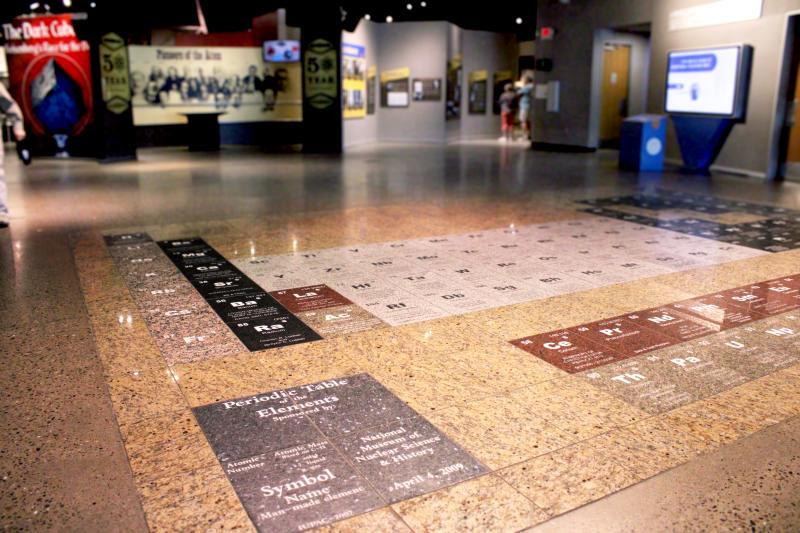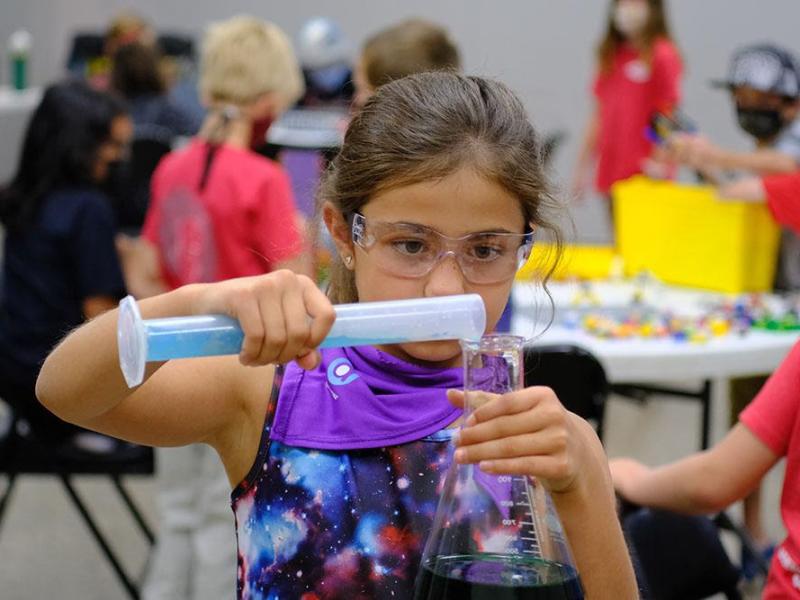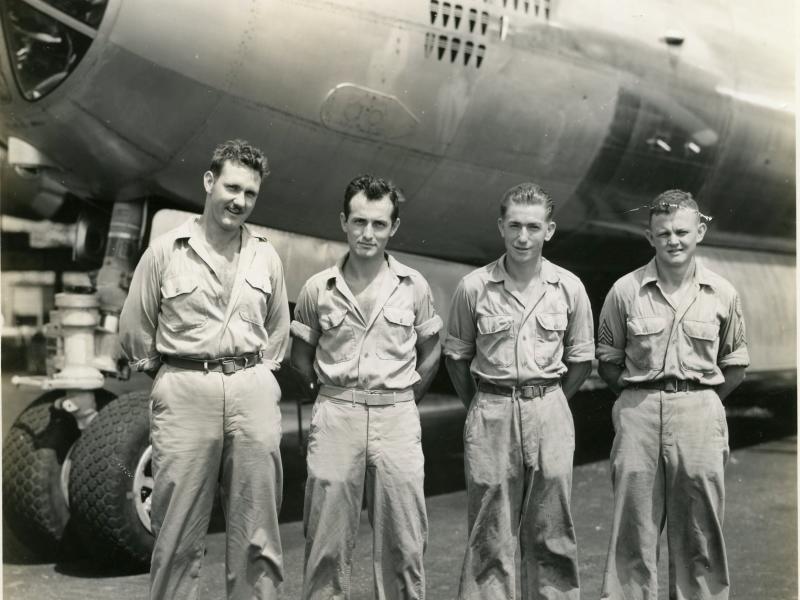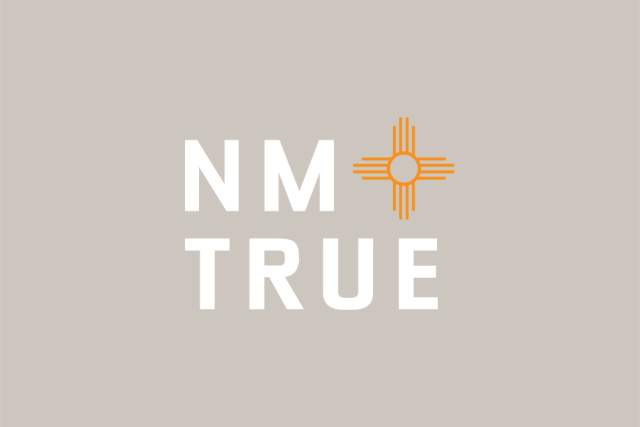The National Museum of Nuclear Science and History brings the Atomic Age to life.
The first thing visitors see when entering the National Museum of Nuclear Science and History in Albuquerque isn’t sitting on a display table or hung on a wall. Instead, guests step right into scientific discovery as they walk upon a 26-by-17-foot granite inlay periodic table of elements.
“We’re here to tell the story of the Atomic Age,” says Bernadette Robin, communications director of the Smithsonian-affiliate museum. Starting with the building blocks of all matter helps to establish that foundation, but any examination of the Atomic Age is complex. “It is a difficult subject,” she says, “one with close connections to New Mexico history.

The National Museum of Nuclear Science and History cultivates a sense of curiosity, wonder, and exploration for those interested in learning about the history and impact of nuclear science, and the diversity of individuals and events that shaped our world, Robin says, The Academy Award-winning movie Oppenheimer, filmed in part in New Mexico, has only fueled interest in the era.
“Certainly, it’s vitally important to tell the story of weaponry,” Robin says, pointing out the replica casings of Little Boy, the uranium bomb dropped on Hiroshima, Japan, and Fat Man, the plutonium-implosion bomb dropped on Nagasaki, during World War II. “But part of our goal is to tell the story of the peaceful uses of nuclear technology.”
Among the popular attractions is an artistic re-creation of an Oppenheimer-era laboratory in Los Alamos. With original furniture, tools, hardware, and electronic instruments used in the 1940s, the exhibit reflects the cramped physical space required by the era’s oversized technology. “It really gives a sense of how it would have been to work and develop nuclear technology during the Manhattan Project,” Robin says.

J. Robert Oppenheimer & Albert Einstein - Photo owned by the National Museum of Nuclear Science and History
For an even deeper understanding of this history, three docent-led tours can be scheduled for groups of up to 80. “Our volunteer docents share their often-direct knowledge of this era,” she says. “The number one comment we receive is how taking a docent-led tour really enhances a visit.”
In the fall, the new Museum Artifact Center will open to house the world’s most extensive, publicly displayed collection of unclassified nuclear weapons and research information. “We’re moving lots of material out of storage that people don’t have the opportunity to see as part of this new space,” Robin says. “There are so many people interested in this heritage material.”
In Little Albert’s Lab, kids of all ages can take a hands-on approach to physics by putting the periodic table elements in the correct order, pushing and pulling magnets, and setting pendulums in motion, while a child-size Albert Einstein robot answers questions about science and energy.

Leaving the building and entering the nine-acre Heritage Park outdoor exhibition area, it’s easy to marvel at the scale of the 100-foot replica Trinity Tower when looking up from underneath it. Aviation buffs can also peer into historically significant airplanes like a B-29 and a B-52 and imagine shooting the “Atomic Annie” cannon. Standing next to several declassified missiles also brings home the power of these artifacts and their place in our recent history.
The museum emphasizes the development of the next generation of scientists, mathematicians, engineers, and thinkers, too. During Nuclear Science Week in October, the museum engages visitors with unique activities and displays for all ages like measuring radiation with a Geiger counter and understanding how radiation shielding works. The annual February Discover STEAM day offers hands-on activities to engage both children and parents. Experiential school vacation camps for kids through sixth grade, and special classes and materials for homeschooled students, bring physics to life for young people. Adults with an interest in science can participate in regular events like Discovery After Dark and the monthly Science on Tap discussion series, complete with grown-up beverages.
“We hope that after a visit, guests make their own conclusions about how they feel about nuclear science and the history that brought us to where we are today,” she says. “Because it took incredible minds working together to create this technology, and many beneficial uses of it have developed.”


